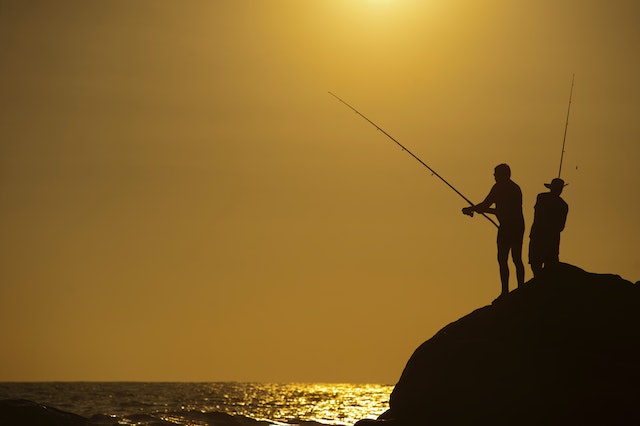While topwater frogs have been a minor player in the fishing world until recently, they have enormous fish potential. They allow anglers to access bass that is buried deep in heavy vegetation. There are two basic styles of topwater frogs: the hollow-bodied plastic frog that floats over grass and the soft plastic toad frog that works like a buzz bait.
Jigging
Jigging is a physical method of topwater fishing. It can be highly addictive and exhilarating, but it’s also demanding. Jigging requires a certain level of fitness and specialist tackle. Gone are the days of big stand-up rods; the new generation of jigging gear is incredibly lightweight yet powerful. When jigging, anglers must take into account the current. This is because predatory fish typically sit against the current, waiting to snag the bait. The correct jigging technique will enable you to jig your bait up current, where the waiting fish will catch it. This is especially useful when fishing near rock piles or big pilings.
Poppers
A popper is a topwater lure with a concave lip. It makes a splashing noise when it is cast or reeled in. It also makes a plopping noise as it is pulled across the water’s surface. This design aims to mimic injured prey to attract fish. Most surface poppers have a cupped face in the front, which causes a wave of water to be cast out behind it on retrieval. Poppers are one of the most versatile lures in topwater fishing United States available to anglers. They mimic various species of baitfish and panfish, including bass. Bass feed on baitfish that break the surface of the water column—meanwhile, bluegill feed on floating insects. Poppers have a subtle splash to imitate the feeding pattern of baitfish, so when used correctly, they attract bass and gamefish.
Hollow-Body Frogs
Hollow-body frogs are an excellent choice for topwater fishing. These lures can be fished in varying water clarity and on hot days. The lifelike legs of hollow-body frogs provide a natural motion to the lure. This allows anglers to feel the bass’ bites better. They are also great for those new to bass fishing. When fishing with hollow-body frogs, the right retrieve is crucial for catching bass. The pauses and cadence are essential for achieving good results. By fishing with the correct retrieve, the bass will be more likely to strike the lure.
Monofilament
A good monofilament line can tell you when to apply maximum pressure. If you’re an experienced angler, you can feel when you’re reaching the breaking point on your line and ease off just a bit of pressure. This is the opposite of a braid, which can break off without warning. Monofilament is inexpensive and works on all reels. Its buoyancy helps you get a better hold on your bait and is perfect for topwater lures. It can also be used as a leader when fishing off the bottom.
Feathered Rear Hooks
Feathered rear hooks on topwater fishing lures give fish a reason to strike them. This hook style allows the angler to lure a bass to the hook without committing. These hooks can be colored red or chartreuse and have flashy Mylar accents. The feathered rear hook is most effective when used with walker or popper fishing lures. The feathers hide the hooks and draw fish close to the bait to make it easier to hook them. Feathered rear hooks work best when trimmed to just below the bend, making the lure easy to handle and retrieve. In clear water, the feathers also help hide the hooks. Feathered rear hooks on topwater fishing lures are popular among largemouth fish. The slim design of this lure makes it an easy meal for bass, and they won’t struggle to swallow it.

